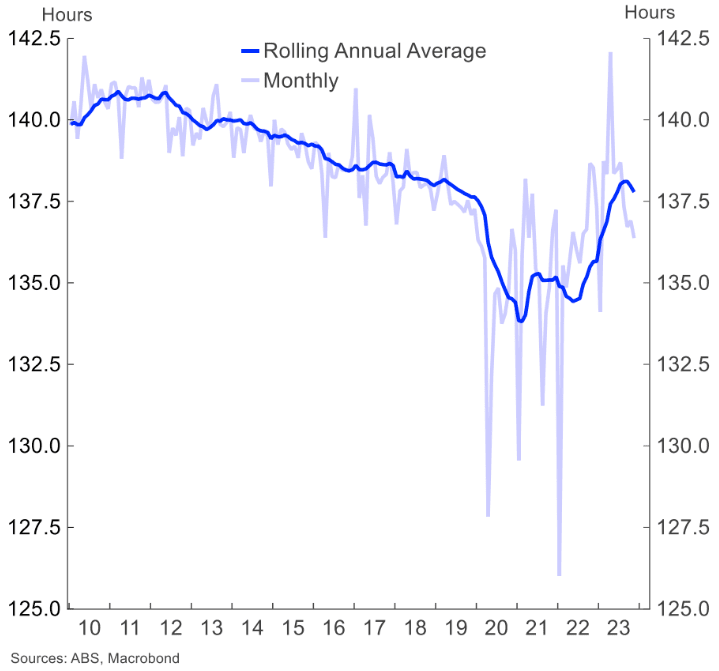Australian Dollar at 6-Month High, Boosted by Strong Job Report and Global Risk Improvement
- Written by: Sam Coventry

Image © Adobe Images
The Australian Dollar has hit a six-month high against the Pound and a four-month best against the U.S. Dollar amidst improved global investor sentiment that followed the Federal Reserve decision and the release of some surprisingly strong domestic jobs data.
The Australian dollar advanced as global risk sentiment improved after the Fed condoned market expectations that it would cut interest rates on several occasions in 2024.
The Australian Dollar to U.S. Dollar exchange rate closed the day a significant 1.50% higher, and gains have extended by a further 0.70% to 0.6705 on Thursday as markets welcomed domestic jobs data that was stronger than had been expected.
Above: AUDUSD at daily intervals (top) and GBPAUD. Track GBP with your own custom rate alerts. Set Up Here.
The ABS said Australia added 61.5K jobs in November, exceeding the consensus expectation for 11.0K and topping October's 42.7K reading.
Participation rose to a record high at 67.2% from 67%, suggesting more workers have entered the jobs market, increasing the unemployment rate to 3.9% from 3.8%.
The figures confirm the labour market remains tight, and the Reserve Bank of Australia (RBA) could have to raise interest rates again.
Firming rate expectations resulted in a further decline in the Pound to Australian Dollar exchange rate to its lowest level in six months at 1.8820.
Compare GBP to AUD Exchange Rates
Find out how much you could save on your pound to Australian dollar transfer
Potential saving vs high street banks:
A$48.75
Free • No obligation • Takes 2 minutes
"The increase in employment was above market expectations and suggests that the labour market remains robust, supported by annual population growth of 3%," says Blair Chapman, an economist at ANZ Bank.
ANZ does not expect a further rate hike but expects the more robust labour market to support its view that the RBA will be later to ease than other central banks.
With foreign exchange markets highly focussed on the 2024 rate cut story, this would support the Australian dollar's outlook, which is reflected in the strong performance of recent hours.
Above: Australia continues to add jobs, image courtesy of ANZ.
Most economists anticipate Australia's labour market to ease over the coming months as higher interest rates weigh on economic activity and bring inflation down to the RBA's target. "However, our Labour Market Indicator only points to a very slow rise in unemployment," says Chapman.
Analysts at Commonwealth Bank of Australia are less optimistic on the outlook, arguing the data shows some signs of loosening.
CBA economist Belinda Allen says employment growth over the past year is running at 3.2%.
"This is in stark comparison to hours worked which has risen just 1.6% through the year. Hours worked was flat in the month. As a result the underemployment rate continued to rise, up to 6.5% from a low of 5.8% in February 2023. A rising underemployment rate and a slowing in hours worked is the second indicator the labour market is loosening," she explains.
CBA expects the unemployment rate to continue to lift from here as supply outpaces demand and reaches ~4.5% by mid-2024.
Above: Average hours worked, image courtesy of St. George Bank.
Money market pricing shows investors are positioned for just two interest rate cuts from the RBA in 2024, but CBA reckons this can increase and weigh on the Aussie Dollar.
"We expect AUD to re‑weaken as a more aggressive rate cut cycle by the RBA is priced," says RBA strategist Joseph Capurso.
Jarek Kowcza, Senior Economist at St. George Bank in Sydney, says the rising underemployment rate highlights "a significantly greater demand for work than is currently being met."
He says growth in labour demand is not keeping up with growth in labour supply, with the underemployment, underutilisation, and youth unemployment rates rising.
"The gradual cooling in the labour market is expected to continue into 2024. This comes against a backdrop of still very strong labour supply growth and people looking for more hours. Most of the action is likely to occur in the broader measures of underutilisation that typically receive less attention, such as average hours worked and underemployment," says Kowcza.
So, while the headlines are supportive of the Australian Dollar, digging into the data reveals increasing weakness that might become more apparent in upcoming releases.
If this is the case, the bullish AUD consensus will be challenged.
Compare GBP to AUD Exchange Rates
Find out how much you could save on your pound to Australian dollar transfer
Potential saving vs high street banks:
A$48.75
Free • No obligation • Takes 2 minutes







